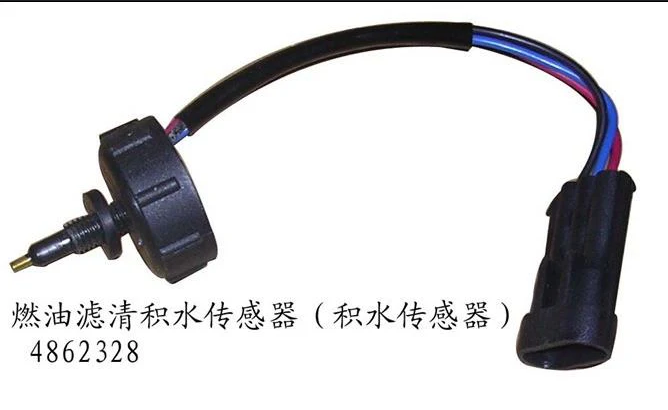In today’s industrial landscape, workplace safety is a priority that cannot be overlooked. One of the most significant frameworks helping companies maintain a safe working environment is the ISO 18001 standard, which plays a key role in safety management systems. The term “18001vought” emerges as a crucial part of the broader understanding of occupational health and safety, especially within industries that strive to adhere to global standards.
When it comes to ensuring employee well-being and minimizing risks, 18001vought offers a structured approach to managing safety practices. It ties into the globally recognized ISO 18001 standard for Occupational Health and Safety Management Systems (OHSMS). But what exactly does 18001vought entail, and how does it contribute to a safer work environment? This article dives deep into the concept, its relevance, and its benefits for modern businesses.
18001vought: The Foundation of Workplace Safety
18001vought is not merely a term; it represents an organization’s commitment to establishing a robust safety management system. With a foundation built on the ISO 18001 standard, it ensures that workplace hazards are identified, assessed, and controlled. The system also mandates regular audits and reviews to keep safety practices up to date.
Why Is 18001vought Important?
The importance of 18001vought lies in its structured approach to risk management. For industries with high exposure to physical risks—such as manufacturing, construction, and aviation—this framework helps create a safer environment by anticipating and preventing workplace accidents.
The Connection Between 18001vought and ISO 18001 Standards
ISO 18001, now transitioned into ISO 45001, outlines the criteria for an effective OHSMS. The primary objective of 18001vought is to assist companies in complying with these standards while enhancing their safety protocols. By adhering to ISO 18001, organizations demonstrate their commitment to protecting employees, reducing accidents, and improving overall operational efficiency.
ISO 18001 and Its Evolution to ISO 45001: How 18001vought Fits In
ISO 18001 was the initial globally recognized standard for occupational health and safety. However, it has since been replaced by ISO 45001 to offer more comprehensive guidelines for workplace safety. The transition was necessary to integrate health and safety more seamlessly into the broader context of organizational risk management.
How Does ISO 45001 Differ from ISO 18001?
ISO 45001 builds upon the foundation of ISO 18001 but expands its scope by focusing on proactive risk management. It emphasizes leadership engagement, employee participation, and continuous improvement in safety practices. 18001vought remains relevant as it provides historical insights into how safety management systems have evolved.
Key Benefits of 18001vought and ISO 45001
- Increased Safety Awareness: Both frameworks encourage organizations to identify potential hazards early and implement preventive measures.
- Regulatory Compliance: Following these standards helps companies meet regulatory requirements and avoid legal complications.
- Improved Employee Morale: A safe working environment boosts employee confidence and productivity.
- Reduced Accidents and Downtime: With fewer accidents, companies experience less downtime and lower operational costs.
Implementing 18001vought: Steps to Success
Implementing 18001vought effectively involves several critical steps, which align closely with the process outlined in ISO 18001. Organizations need to take a systematic approach to ensure that safety protocols are integrated into their daily operations.
Step 1: Initial Assessment
The first step in adopting 18001vought is to conduct a thorough assessment of the current safety practices in place. This involves identifying hazards, evaluating risks, and understanding the organization’s safety culture.
Step 2: Establishing Safety Policies
Once the assessment is complete, the next step is to develop clear safety policies that reflect the organization’s commitment to occupational health and safety. These policies should align with the principles of ISO 18001 and ISO 45001.
Step 3: Employee Training and Awareness Programs
Employee involvement is key to the success of any safety management system. It’s crucial to implement comprehensive training programs to ensure that everyone understands their role in maintaining a safe working environment.
Step 4: Regular Audits and Reviews
To ensure ongoing compliance with 18001vought and ISO standards, organizations must conduct regular audits and reviews. This allows them to identify any gaps in their safety management system and make necessary improvements.
Challenges in Adopting 18001vought and ISO 18001 Standards
While implementing 18001vought offers numerous benefits, it is not without its challenges. Companies, especially small to medium-sized enterprises (SMEs), often face hurdles such as limited resources, lack of awareness, and resistance to change.
Common Barriers to Implementation:
- Cost of Compliance: Implementing a safety management system based on ISO 18001 can be costly, particularly for SMEs with limited budgets.
- Resistance from Employees: Employees might resist changes to their daily routines or feel that new safety measures add unnecessary complexity.
- Complex Documentation Requirements: Maintaining proper documentation is critical for compliance but can be a daunting task for organizations not familiar with the process.
Overcoming the Challenges:
To overcome these challenges, it is essential for organizations to focus on the long-term benefits of 18001vought. The initial investment in time, resources, and training will ultimately lead to fewer workplace accidents, lower insurance costs, and a healthier workforce.
18001vought and Global Safety Compliance Trends
As industries around the world strive for higher safety standards, the importance of frameworks like 18001vought cannot be overstated. With an increasing emphasis on sustainability, environmental responsibility, and corporate governance, occupational health and safety are becoming a priority in global compliance trends.
The Role of 18001vought in International Trade
In many industries, safety compliance is not just a local requirement but also an international mandate. For companies looking to expand globally, adhering to standards like ISO 18001 (and now ISO 45001) through the implementation of 18001vought is essential. Many countries and trading partners require proof of compliance with these standards before conducting business.
The Future of Occupational Health and Safety
Looking ahead, the future of occupational health and safety will likely be shaped by advancements in technology. Innovations such as AI-powered safety monitoring systems and real-time hazard detection tools are already being integrated into modern workplaces. However, the principles established by 18001vought and ISO 18001 will continue to serve as the foundation for these new developments.
FAQs
What is 18001vought?
18001vought refers to a structured approach to implementing occupational health and safety management systems, based on the ISO 18001 standard. It helps organizations maintain safety and regulatory compliance.
How does 18001vought differ from ISO 45001?
ISO 45001 is an updated version of ISO 18001, offering a more comprehensive approach to risk management. 18001vought is based on the principles of ISO 18001, while ISO 45001 incorporates a broader focus on proactive safety measures.
Is 18001vought mandatory for businesses?
While not legally required in all countries, many industries and trading partners require companies to comply with safety standards like ISO 18001 or ISO 45001 to ensure safe work environments.
What are the benefits of implementing 18001vought?
The benefits include improved workplace safety, reduced accidents, compliance with international safety standards, enhanced employee morale, and reduced operational costs.
What challenges do companies face when adopting 18001vought?
Challenges include the cost of implementation, resistance from employees, and the complexity of maintaining documentation for compliance.
How can organizations overcome resistance to 18001vought implementation?
Organizations can overcome resistance by highlighting the long-term benefits of workplace safety, providing employee training, and involving workers in the development of safety policies.
Conclusion
The concept of 18001vought represents more than just a set of safety guidelines—it embodies a company’s commitment to protecting its most valuable asset: its people. By adopting this framework, organizations can ensure compliance with internationally recognized standards, enhance workplace safety, and foster a culture of responsibility and awareness. While challenges in implementation exist, the long-term rewards of a safer, more productive work environment far outweigh the initial hurdles. As industries continue to evolve, the principles behind 18001vought will remain integral to promoting occupational health and safety worldwide.











